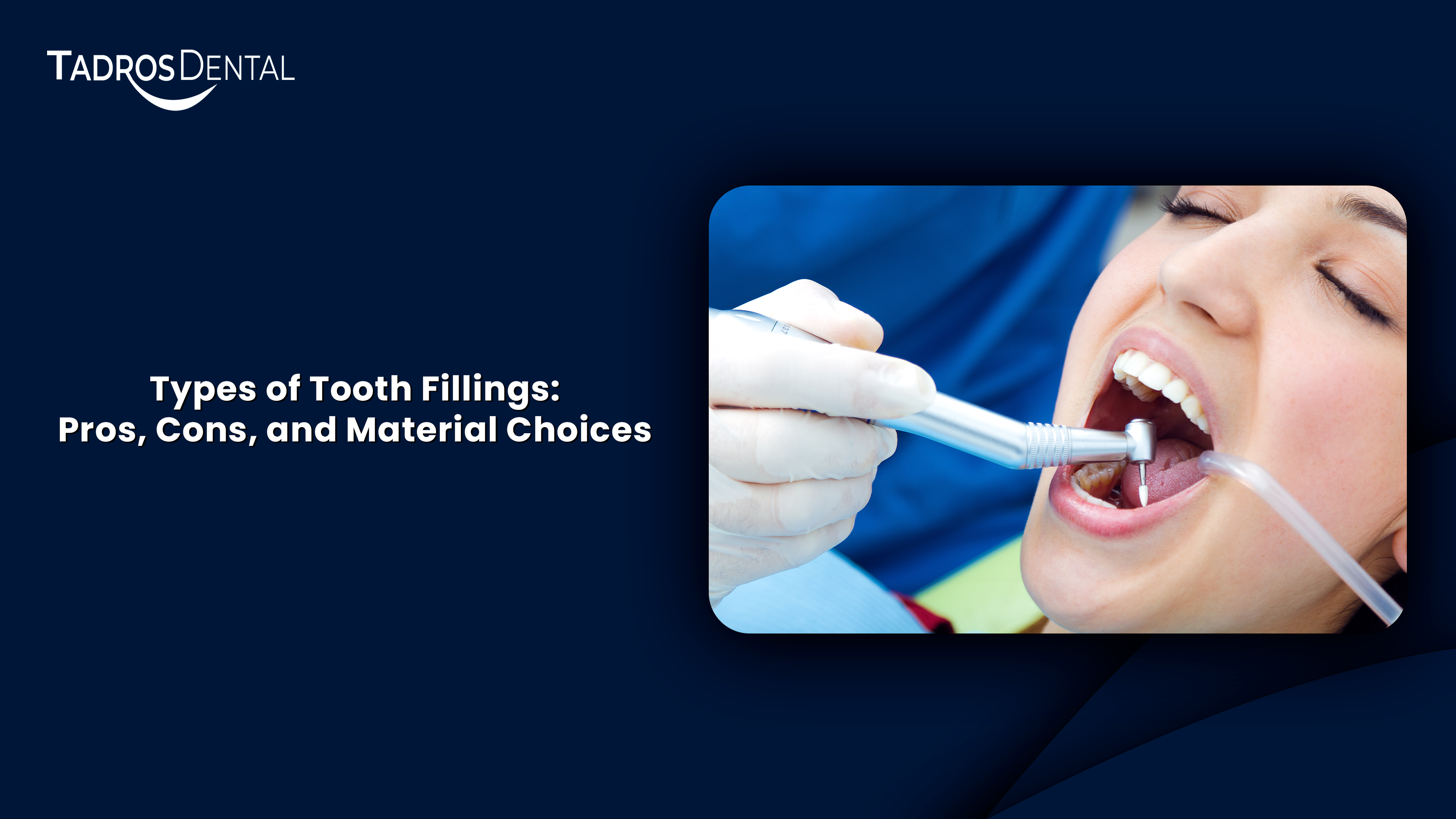
Dental fillings refer to a restorative material used by dentists to repair tooth decay. Regardless of the age aspect, tooth decay nowadays has become extremely common.
In the US alone, 90% of adults between the ages of 20 to 64 years have been affected by decay at one point in their lives. That is a lot of people who will need to get a tooth filled, but they are confused about the dental filling and have a lot of questions.
According to the expert dentist, here is the real problem. Patients are confused about the types of tooth fillings, prices, safety, and longevity. Sometimes dental brands and clinics struggle to explain choices clearly to the patient.
However, in this blog, we’ll explain it in the best possible way. First, let’s start with the type of tooth fillings. The dental fillings are categorized into 5 major categories mentioned below:
Amalgam is the classic silver colored metal filling. It is a mix of metals that usually includes mercury, silver, tin, zinc, and copper. This material is durable with a long history of use cases for molars and high-stress areas. Relatively cost-effective compared to some tooth-coloured materials.
Important safety note. The U.S. Food and Drug Administration (FDA) advises that certain people should avoid new amalgams whenever possible. This includes pregnant people, those who plan to become pregnant, nursing mothers, children, especially under six, and people with kidney disease, certain neurological conditions, or known allergies to amalgam components. If you already have a good and intact amalgam, do not remove it unless your dentist says it is medically needed.
Pros
Cons
Composite is tooth colored. It bonds to enamel and dentin. It is often the first choice for front teeth and small to medium cavities that show when you smile. Some studies find composites may need replacement sooner than amalgams in heavily spotted areas, although technique and patient habits matter a lot. The American Dental Association (ADA) consumer guidance also notes that composites can take more time to place and may cost more.
Pros
Cons
Ceramic or porcelain is an extremely natural-looking tooth filling substance; it does not stain. The reason why people use it is simply that it looks extremely aesthetic. It is common for larger restorations, such as inlays and onlays. It usually requires an indirect process in a lab or a same day milling system. It can be strong, but it may require a slightly larger prep to seat the piece.
Pros
Cons
The gold fillings consist of a gold alloy. Gold as a filling material is very durable, biocompatible, and kind to opposing teeth. With good oral heath maintenance, they can last many years. They are less common today due to appearance and higher lab costs, but are still used in some practices. Some people still choose them for long-term service in molars.
Pros
Cons
Glass ionomer is a dental filling material that releases fluoride. This fluoride provides a little extra protection to your teeth. That helps people with high cavity risk or areas that are hard to keep dry. These materials are useful for root surface cavities, baby teeth, or as liners in a sandwich technique. They do not take heavy chewing forces as well as other materials.
Pros
Cons
Lifespan depends on bite force, cavity size, dryness during placement, oral hygiene, diet, and grinding. Study summaries often show longer average survival for amalgam in heavy-load molars. Composite survival can be similar when the technique is excellent and the case is well chosen. Reported survival ranges vary across studies and settings.
Consumer facing summaries give broad ranges to set expectations. Silver colored fillings may last many years. Composites often last a decade or more. Ceramic and gold can be long-lasting when well designed. Glass ionomer usually serves shorter spans and shines in special situations due to fluoride release. Your own result will depend on care, diet, and checkups.
Follow these steps with your dentist.
When you need a fast solution, pick the easiest material that addresses the chewing requirement, as well as the appearance desires of such a tooth.
The type of filling is also a critically important decision that you need to make to save your smile and to recover the functionality of your tooth. Being informed about the nature of tooth fillings will enable you to make a wise decision with your dentist.
Interested in trying out the filling that suits you? Call Tadros Dental now and book an appointment, and have your tooth filling done with the material that best suits you. Whether you need a single tooth filled or a full smile plan, you get a personal treatment path instead of a one-size-fits-all answer.


Privacy Policy | Powered by Capline, a Top-Rated Solutions Provider for Dental Offices.